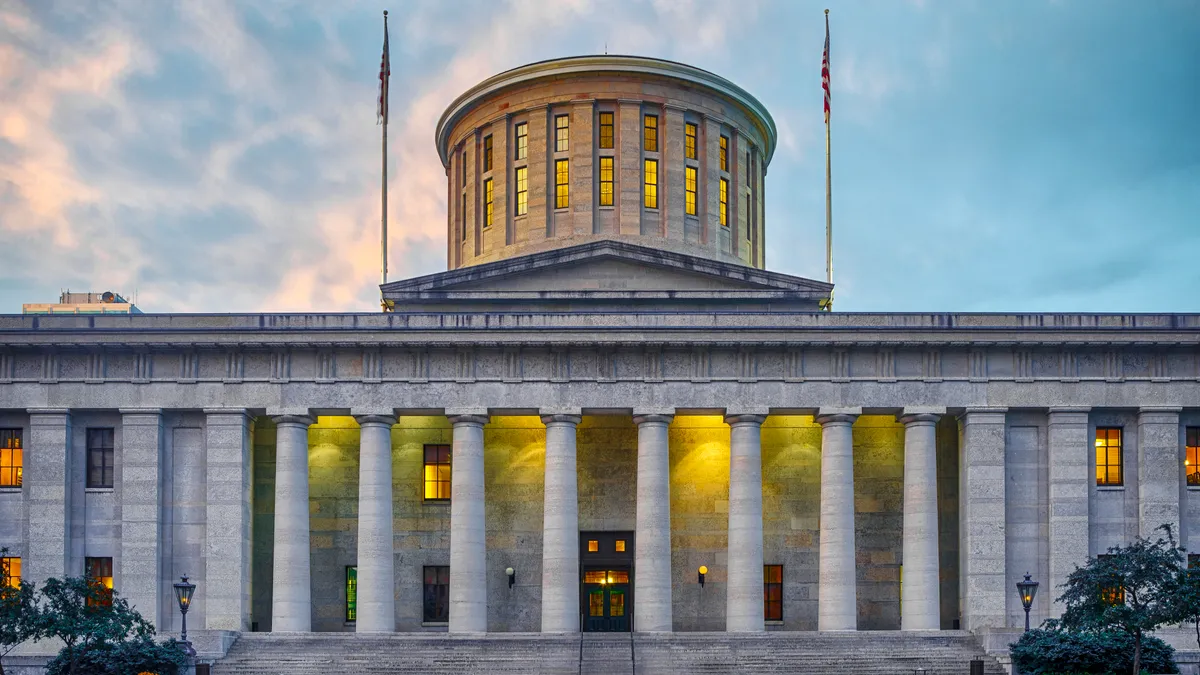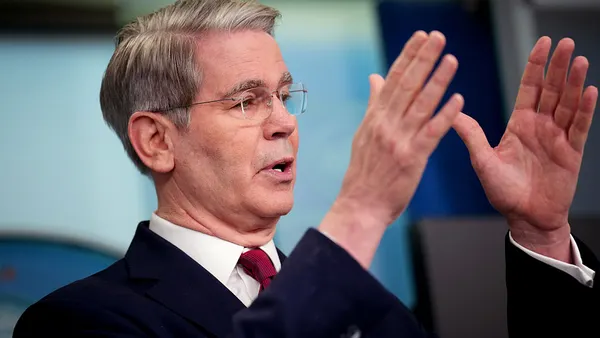Dive Brief:
- Job openings fell in July and layoffs rose, the Bureau of Labor Statistics said Wednesday, highlighting how the murky outlook from Trump administration shifts in trade and other policies has prompted companies in recent months to forgo expanding payrolls.
- The number of available jobs decreased from 7.36 million in June to 7.18 million in July, the lowest level since September 2024, according to the BLS. Layoffs increased by 12,000 to 1.8 million, the highest level in 10 months.
- “Recent data have further increased my perception of downside risks to the labor market,” St. Louis Federal Reserve Bank President Alberto Musalem said Wednesday. “These include a higher proportion of longer-term unemployed workers, rising unemployment rates for demographic groups that are more sensitive to economic cycles and substantial downward revisions to payroll growth estimates.”
Dive Insight:
Policymakers including Fed Chair Jerome Powell have kept borrowing costs stable for five consecutive meetings this year, saying that changes by the Trump administration to fiscal, regulatory, trade and immigration policies complicate economic forecasting.
Companies confront the same blurry outlook, Musalem said.
“Throughout the year, businesses have said that uncertainty about the impact of tariffs and other economic policies made planning difficult and left them hesitant to add to payrolls,” he said.
The softening labor market, and comments by Powell last month opening the way for a potential loosening of monetary policy, have prompted traders in interest rate futures to increase the odds that the Fed will trim the federal funds rate at a Sept. 16-17 meeting.
Traders saw on Wednesday saw a 95% probability of a cut to the main interest rate at the next gathering of policymakers compared with 80% on Aug. 1, according to the CME FedWatch Tool. The Fed this year has held the benchmark rate at a range between 4.25% and 4.5%.
“Looking ahead, I expect the labor market to gradually cool and remain near full employment with the risks tilted to the downside,” Musalem said, noting that the pace of job creation this year has slowed compared with 2024.
Echoing other policymakers, Musalem said he expects that the inflationary impulse from tariffs will prove temporary, increasing price pressures during the next two or three quarters.
In coming months stable long-term inflation expectations and sub-par economic growth will likely keep price pressures in check, he said, predicting that inflation will resume its decline toward the central bank’s 2% goal during the second half of next year.
“However, there is considerable uncertainty, and I perceive a reasonable possibility that above-target inflation could be more persistent,” he said.
“Indirect effects on non-imported goods and services or second-round price increases stemming from tariffs could cause the adjustment process to take longer,” he said.
“Some firms tell me they have been absorbing cost increases while tariff rates have been in flux to avoid making multiple pricing adjustments, but they expect to eventually raise prices,” Musalem said.
Policymakers at their meeting this month must focus on balancing the two sides of their congressional mandate to maintain stable prices and ensure full employment.
Both objectives have moved off kilter in recent months, with inflation edging up close to 3% as hiring declines.
“Inflation is still too high, but at the same time the labor market is showing some signs of cooling, so we're getting into a tricky position now for the Fed,” Minneapolis Fed President Neel Kashkari said Wednesday.
“Our one tool can push down inflation and the labor market, or it can push up inflation and the labor market,” Kashkari said, referring to the federal funds rate. “And so now we're at this touchy area where we have to be very careful that we don't overdo it one way or the other.”











